Alfred Cannon was born in a small terraced house on Jupps Road, East London on 8 June 1922; his father Thomas had previously served at the siege of Ladysmith during the second Boer war. On leaving Guardian Angels RC School at the age of fourteen, having attained the certification of 'Captain of the School', Alfred entered an apprenticeship at Cooke's of Finsbury, office furniture manufacturers.
As his apprenticeship drew to a close, Alfred became determined to join the armed forces as he believed he would be more helpful in combat than working in the factory which had recently made the switch to war work. Having heard requests over the wireless for young men of eighteen to join the young soldier's battalions, Alfred volunteered for service at Whipps Cross on his eighteenth birthday. Reporting to Blackheath, Alfred became a member of the Young Soldiers' Battalion,The King's Royal Rifle Corps, partaking in railway and airstrip guard duties as well as downed enemy aircraft recovery.
By 1941 and the end of initial training, Alfred volunteered to join the 1st Airborne Reconnaissance Squadron at Bulford camp near Salisbury, Wiltshire. Following this, he was sent to join the 1st Air Landing Squadron which took part in an ill-fated glider flying exercise on 14 September 1942. The exercise, named 'Operation Mars', involved flying in gliders from Hurn aerodrome to Everleigh, however Alfred's glider, containing ten men, crashed at Netheravon, a result of poor visibility - all were injured except 2nd Lt Galbraith. Alfred immediately aided his colleagues but, on arrival at Tidworth hospital, was found to have suffered head and facial injuries as well as severe concussion himself in the incident.
A recovery period followed which separated Alf from the unit for a couple of months. On return to the unit Alf found himself a member of the 1st Airborne Reconnaissance Squadron with a cap badge comprised of a spearhead flanked by two lightning flashes – emphasising the speed of the squadron advance which would take place largely in jeeps or motorbikes.
In 1943, the squadron embarked on its first assignment abroad on the 'Empress of Canada' from Liverpool to North Africa. A relatively uneventful journey was disrupted on approach to Oran when dive-bombers attacked part of the convoy however there were no casualties. Disembarking at Oran they proceeded to French Morocco to engage in the North African campaign with the task of mopping up small pockets of German resistance and taking prisoners. One mission involved transporting French Foreign Legionnaires to Sidi Bel-Abbes.
Alfred's squadron was disappointed to be left out of the invasion force to Sicily and were instead tasked with continued advancement through Algiers, Tunis, Sousse and Sfax followed by a return to Philippeville where they embarked on the cruiser 'Penelope' bound for the invasion of Italy. Training conducted previously in the Atlas Mountains was invaluable when increasingly strong resistance was encountered further inland in Italy following landing at Taranto.
The squadron was tasked with liberating towns and villages as they advanced up the East Coast, Bari being the first large town to be liberated. This would be followed by the capture and occupation of Foggia and its airport as well as the detainment of several German prisoners. Following arrival at Pescara (and a near miss with a landmine) the squadron were ordered back to Bari for recuperation. Following this the squadron was ordered back to Taranto and then to Philippeville once again where they were recalled to England in December 1943. The returning ship suffered a collision with a second ship in the convoy but returned home regardless (the second ship, badly damaged, had to return to Gibraltar).
On return to the village of Ruskington near Sleaford in Lincolnshire the squadron were issued with Khaki berets to mask the fact that the Airborne Squadron (and their distinctive maroon berets) had returned to England.
Alfred was part of a small group known as the glider party based at Tarrant Rushton, Dorset, who were responsible for the squadron's vehicle trailers, heavy equipment and ammunition. Following many disheartening cancelled departures the squadron was readied to engage in 'Operation Market Garden'. On 17 September 1944, the squadron gathered at the airfield awaiting take-off. However, Alfred, already readied in combat gear prepared to embark in less than a few minutes, was ordered back to HQ for administration duties.
Alfred suffered a sense of rejection at having to be recalled from the mission moments before it had even begun and had difficulty understanding why he had been chosen for administration duties despite having trained for the mission the same as his colleagues. His squadron was of course bound for Arnhem, Holland, in order to capture the bridge there. When Alf learned of the crippling defeat suffered by his squadron at Arnhem he considered himself lucky to have been recalled at the last second, yet still felt a sense of guilt at not being able to go into combat with his squadron, so many of whom were killed, wounded or captured that the unit was unable to return to its past strength.
The day after VE Day, Alfred and his colleagues were flown out to Stavanger in Norway in order to mop up pockets of German resistance remaining in the country. The unit scoured hospitals, camps and German headquarters for SS troops, moving down the coast from Kristiansand, through towns and villages until reaching Oslo where they stayed for a brief period. A sweep up to the Swedish border was ordered to eliminate further resistance but little resistance was encountered after the first few days. They also set about returning wireless sets to the Norwegian people that had been confiscated by the German invaders. Following six months of service in Norway, Alfred and his fellow servicemen left Stavanger bound for home, cheered by hundreds of Norwegian people at the quay and each receiving a certificate of thanks signed by King Olav of Norway.
On return to England Alfred took on the role of a driver until July 1946 where he received his discharge papers and travel warrants in York. Alfred was issued money in lieu in place of a civilian demob suit due to a lack of correct size! Disillusioned by the sight of post-blitz London on his return to the capital, Alfred contemplated rejoining the service, but instead married Elaine, a canteen worker whom he had met in Catterick following his service in Norway, on 12 October 1946 at St. Peter's Church, Frampton Cotterell. Together they had three daughters: Susan, Kathryn and Moira.
Life in the army had left Alfred finding it difficult to settle in one place for any length of time and so the family moved regularly, firstly back to London, followed by Essex and then Bristol. In 1959 they emigrated to Australia, but returned two and a half years later settling down once again near Bristol. For the rest of his working life Alfred worked in painting and decorating.
Alfred Cannon died on 12 January 2004. He was 81.



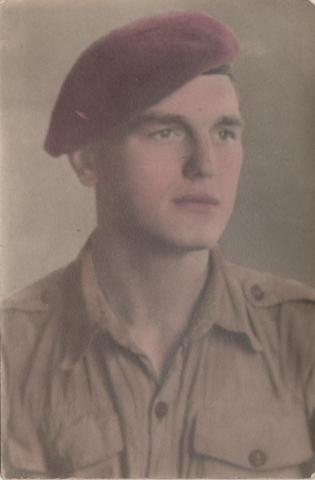
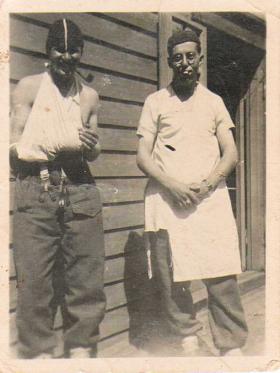
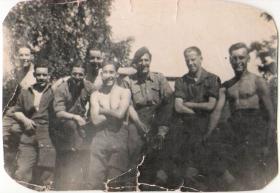
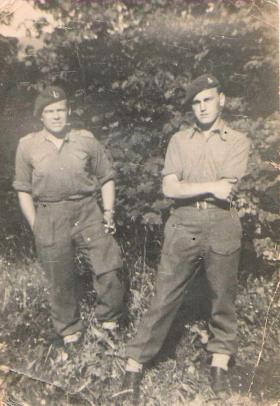
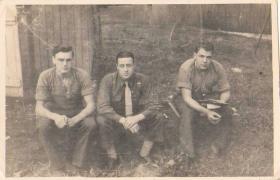
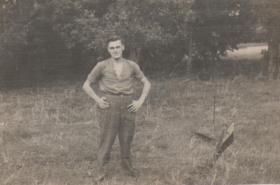
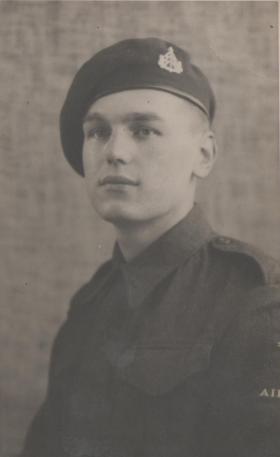
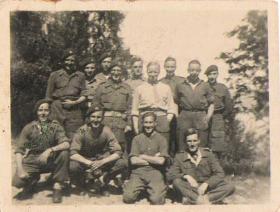
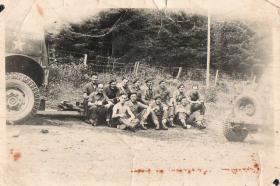
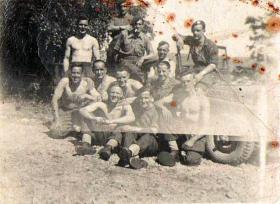
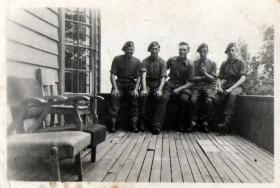
Latest Comments
There are currently no comments for this content.
Add Comment
In order to add comments you must be registered with ParaData.
If you are currently a ParaData member please login.
If you are not currently a ParaData member but wish to get involved please register.